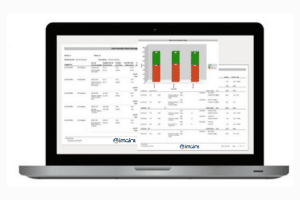Spare part management is a cornerstone of your preventive maintenance plan. It keeps your equipment running efficiently by ensuring you have the right parts at the right time. Effective spare part management minimizes inventory costs while maximizing equipment uptime. It also prevents lost production time by ensuring you don’t waste hours searching for parts that aren’t in stock.
Managing spare parts inventory can be challenging, especially with a variety of equipment types. Each piece of equipment requires unique spare parts. Holding a well-stocked inventory can be expensive, particularly if you hold onto parts you don’t need for months. The goal of spare part management is to balance carrying costs with parts availability, performance, and reliability.
Managing Inventory-Related Costs
You must manage several cost drivers in spare part management:
- Ordering: Every order costs time and money. You need to prepare purchase orders, process invoices, and issue payments.
- Holding: Spare parts take up space and incur costs, especially if space is limited.
- Security: Depending on the inventory’s value and location, you may need to invest in security measures like cameras, security systems, and secure storage.
- Information Systems: You often use maintenance management systems to manage spare parts inventory. These systems come with costs for purchasing, implementing, operating, and upgrading.
- Human Resources: You may need staff to manage storerooms, receive and inspect parts, and restock inventory.
Carrying excess inventory is costly. To reduce inventory levels, use a CMMS/EAM to rank asset criticality based on downtime consequences. Focus more time, money, and resources on your most critical assets. Once you identify critical assets, determine the spare parts needed for their maintenance. Keeping a well-stocked inventory of parts for these assets reduces the risk of catastrophic failure.
Maintaining Spare Parts Stock
A strong spare part management program helps you rotate parts so they function at full capacity throughout an asset’s life. If spare parts aren’t lasting as expected, evaluate how they’re stored and maintained. Improper storage can lead to defects and reduce shelf life. Maintenance managers should protect spare parts from rust and corrosion, inspect them for damage, and ensure materials don’t dry out. You can set up maintenance management systems to generate automatic notifications for spare parts inspections.
Why Use Maintenance Software for Spare Part Management?
Maintenance management software can save you 5% to 10% on annual spare parts inventory costs. The software tracks inventory, identifies obsolete parts, and alerts you when it’s time to restock. You can monitor spare parts usage, stock levels, and receive automatic notifications when parts reach reorder points.
For more information on how maintenance management software can enhance your preventive maintenance plan and improve your spare part management strategy, contact DPSI today or start a free trial of our CMMS systems!





